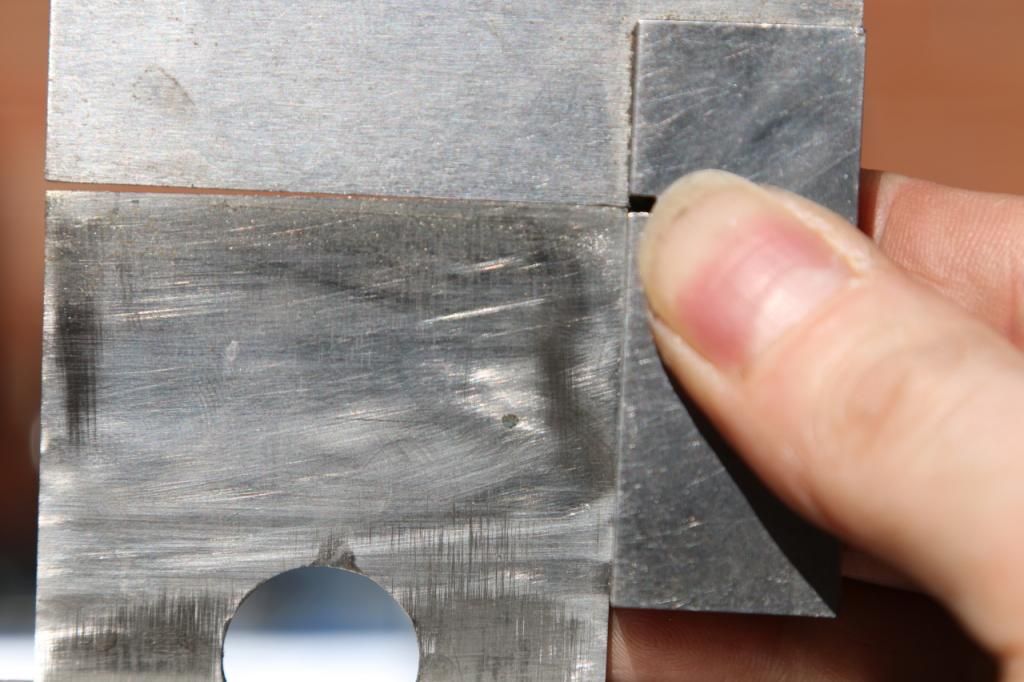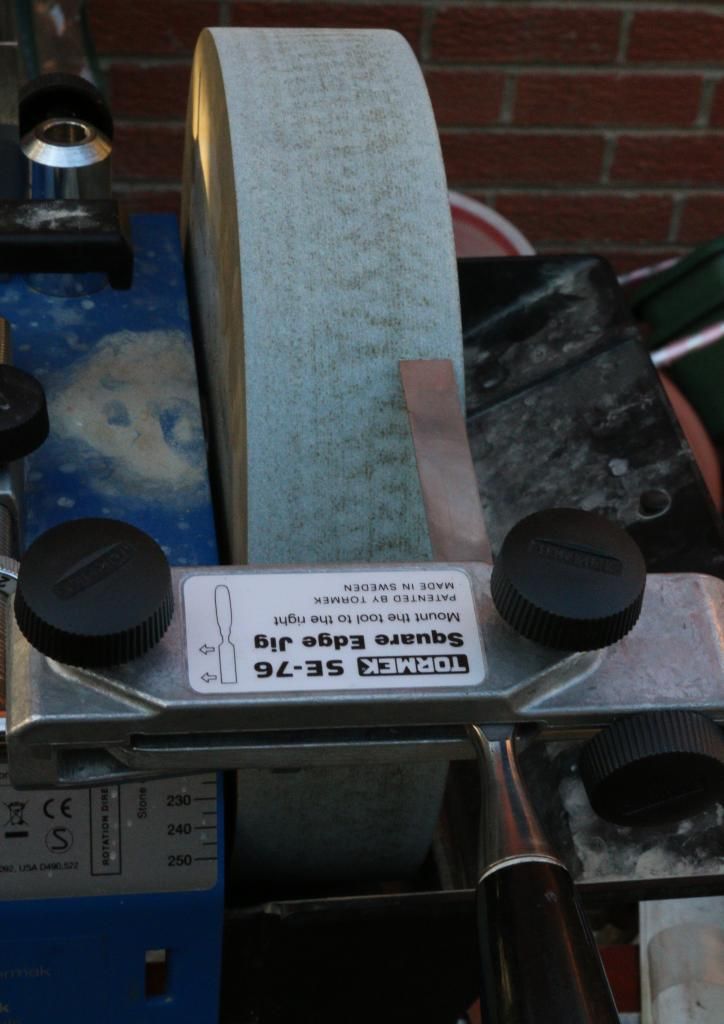I've been told that Tormek have examined my original machine and can apparently find no fault with it.
Yet as soon as I moved from that machine to a new machine, I was able to sharpen blades squarely.
I'm now in the position where I've no idea what was going on. I simply won't accept any attempt to shift the blame to the blades, as they included in the blades that were skewed, a blade from a Clifton No 7 Jointer Plane, the cost of which is more than the cost of a T4.
I appreciate all the hard work by Stig and the UK distributor on this but the fact remains that no-one can explain why I had problems with the original machine. Further, I was never completely satisfied with the straightness of the edge of any blade I sharpened with either T7 unit. I could never find a way to prevent a curve.
It is with sadness therefore that I have to grudgingly admit defeat with the Tormek system and reluctlantly accept that it simply does not work for me, at least not to the tolerances I'm looking for.
I'm disappointed because the blades were sharp. but not square or straight.
Having moved to a school without the Tormek I've had to revert to Oil or Diamond stones. Regrinding on the viceroy Sharpedge and then honing on the oilstone. It takes a bit longer and the blades whilst still cutting hair, aren't quite as sharp, so I've no access to the Tormek system any more. I may have been able to perfect the method, but to be perfectly honest, I did over 200 blades on it and that ought to have been enough. If it's really that difficult then Torkmek need to look again at their training/teaching methods. I've done nearly as many blades (around 160) by hand in less time than I spent troubleshooting the problems I had with the original T7 unit.
I understand that this won't be well received, and also may appear churlish in light of all the effort from Tormek, but I've reached the end of the road. I'd hoped eventually to purchase a Tormek for my own workshop, but after the difficulties I've had, my options are now to stick with Scary Sharp or Japanese waterstones. I miss the ease and speed of the T7 but it's not much good if it's not straight.
Yet as soon as I moved from that machine to a new machine, I was able to sharpen blades squarely.
I'm now in the position where I've no idea what was going on. I simply won't accept any attempt to shift the blame to the blades, as they included in the blades that were skewed, a blade from a Clifton No 7 Jointer Plane, the cost of which is more than the cost of a T4.
I appreciate all the hard work by Stig and the UK distributor on this but the fact remains that no-one can explain why I had problems with the original machine. Further, I was never completely satisfied with the straightness of the edge of any blade I sharpened with either T7 unit. I could never find a way to prevent a curve.
It is with sadness therefore that I have to grudgingly admit defeat with the Tormek system and reluctlantly accept that it simply does not work for me, at least not to the tolerances I'm looking for.
I'm disappointed because the blades were sharp. but not square or straight.
Having moved to a school without the Tormek I've had to revert to Oil or Diamond stones. Regrinding on the viceroy Sharpedge and then honing on the oilstone. It takes a bit longer and the blades whilst still cutting hair, aren't quite as sharp, so I've no access to the Tormek system any more. I may have been able to perfect the method, but to be perfectly honest, I did over 200 blades on it and that ought to have been enough. If it's really that difficult then Torkmek need to look again at their training/teaching methods. I've done nearly as many blades (around 160) by hand in less time than I spent troubleshooting the problems I had with the original T7 unit.
I understand that this won't be well received, and also may appear churlish in light of all the effort from Tormek, but I've reached the end of the road. I'd hoped eventually to purchase a Tormek for my own workshop, but after the difficulties I've had, my options are now to stick with Scary Sharp or Japanese waterstones. I miss the ease and speed of the T7 but it's not much good if it's not straight.




